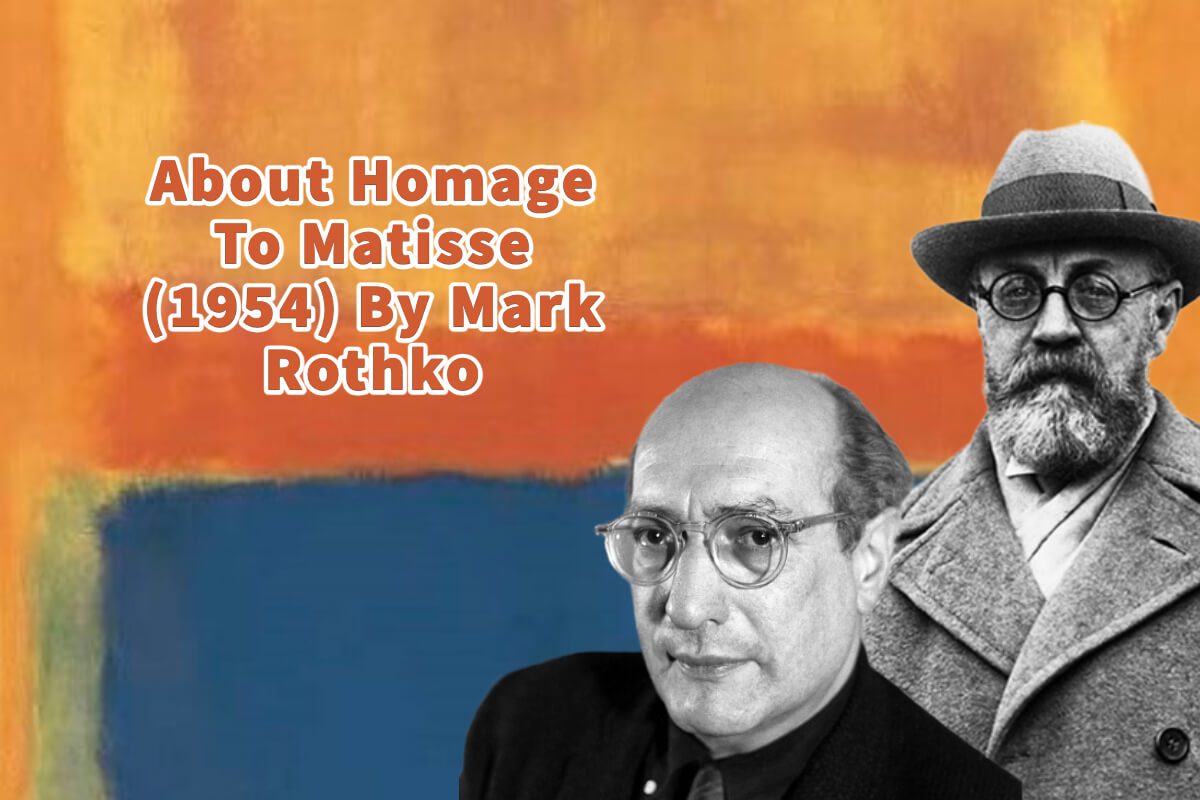Mark Rothko was one of the most influential abstract expressionism artists who ever lived. He was known to be creative and to event new and exciting art techniques.
One painting Mark Rothko painted in 1954 is called Homage To Matisse. This painting is labeled differently than his other paintings, which are usually labeled with numbers and colors. But this painting was a personal tribute from Mark Rothko to the great French artist Henry Matisse and his influence on him and his artwork.
Table of Contents
- The Homage To Matisse (1954) Painting By Mark Rothko – Why It Is Important
- Henri Matisse’s Influence On Mark Rothko’s Art
- Ten Reasons Why Mark Rothko Captivates My Heart
- Frequently Asked Questions
- Related Questions
The Homage To Matisse (1954) Painting By Mark Rothko – Why It Is Important
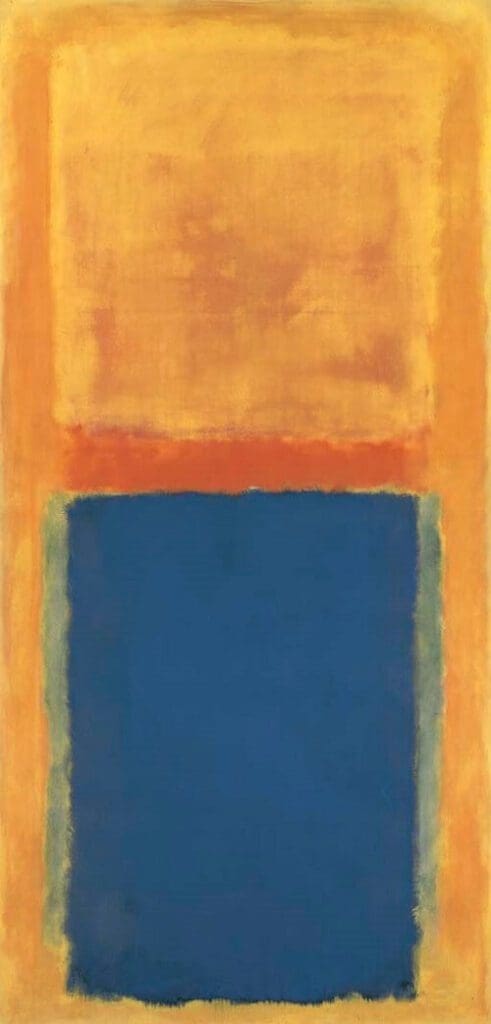
After Mark Rothko developed what most people consider his mature style of painting in 1949, he rarely titled his artwork. Most of his artwork had numbers and color combinations as No 7 or No 6 (Violet, Green, and Red).
So it is very rare that in 1954 Mark Rothko titled a painting called “Homage to Matisse.” The painting was painted in 1954, the year of Henry Matisse died.
The title of the painting was a public declaration that Rothko felt he owed Henry Matisse. What made this declaration in the painting so rare was that Mark Rothko, like many other painters in the New York school, rarely showed or spoke of any debit to the European painters; the New York School painters wanted to be seen as being completely independent.
The other surprising aspect of his ”Homage to Matisse” is that Mark Rothko was also opposed to what was the School of Paris and its lack of moral and political conscience. Rothko’s students in the 1940s, when he taught in California, remember him and the fellow painter Clyfford Still as follows:
“…yak, yak, yakking against the French tradition (and) was always anxious lest he should be taken for a painter in the vein of Matisse, whom he nonetheless dearly loved.”
Anna Chave, Mark Rothko, Subjects in Abstraction New Haven 1989
For Mark Rotko to publicly declare a Homage to Matisse was no small matter even though by 1954, he was becoming a well-established leading artist of his generation.
In the Homage to Matisse, you can see the influence of many of the colors Matisse used. The yellows and blues with oranges from Matise’s Mediterranean paintings. There is almost warm Mediterranean energy in the painting Homage To Matisse.
Also, the brilliant way that Mark Rothko used the paints and colors almost as if they ran into each other without any sharp line. And the muddled background and use of color are similar to many Matisse paintings.
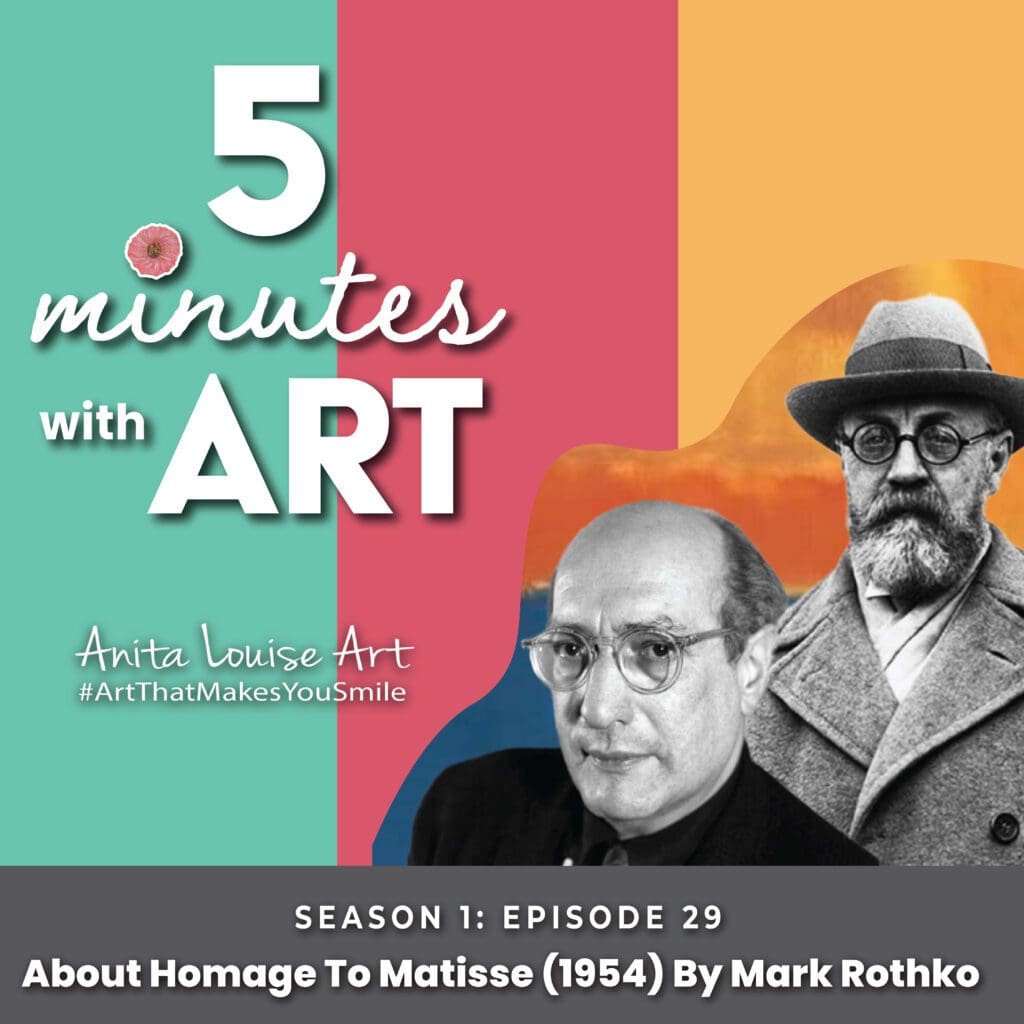
Listen To Our Podcast About Homage To Matisse (1954) By Mark Rothko by clicking here.
Henri Matisse’s Influence On Mark Rothko’s Art
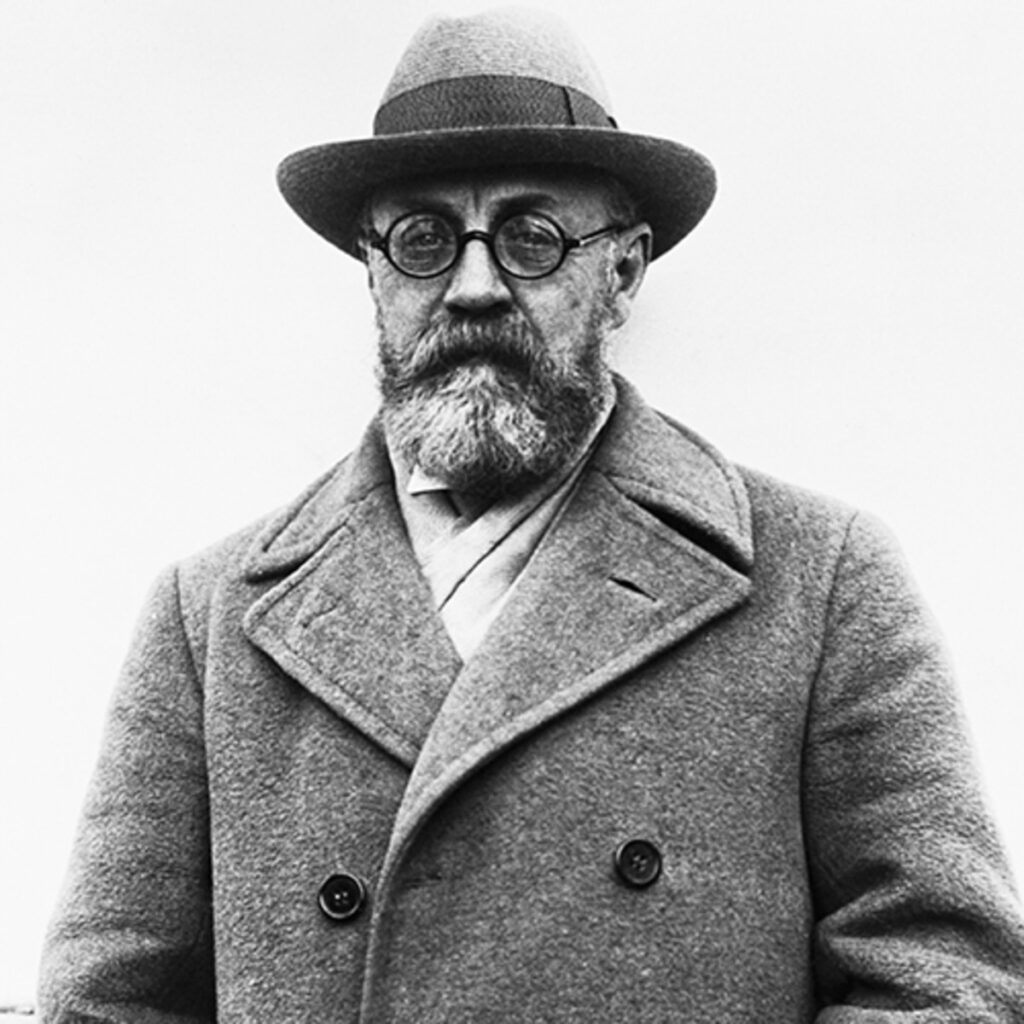
It was said that Homage to Matisse had a lot of personal meaning to Mark Rothko. Rothko had told friends that he credited the French artist Matisse with his understanding of color and how to use color.
Rothko was known to have told some friends he owed his success and understanding of color to Henri Matisse and the way Henri Matisse was able to use color.

Legend says that Mark Rothko’s painting technique changed after viewing a painting by Henri Matisse; the painting by Henri Matisse inspired Rothko is the Red Studio painting Matisse painted in 1911.
In 1949 the New York Museum of Modern Art showed the Red Studio painting by Henri Matisse. Mark Rothko was known to visit the painting often as he was enthralled by painting.
Mark Rothko was known to say to a friend that he understood how painting and color were a lot like music – similar to how Matisse saw the painting. Mark Rothko was known to say:
“ You became that color, you became totally saturated with it as if it were music …You remember when I used to pass my days at the Museum of Modern Art looking a Matisse’s Red Studio? …..why always that and only that picture? You thought I was wasting my time. But this house you owe to Matisse’s Red Studio. And from those months and that looking every day all of my painting was born.”
Mark Rothko
We know that in 1949, Mark Rothko’s style of painting changed. During that time, he started to paint his now famous large areas of color for which he is now most famous. It was also when he started to paint his famous colors, and how he used the paints also changed.

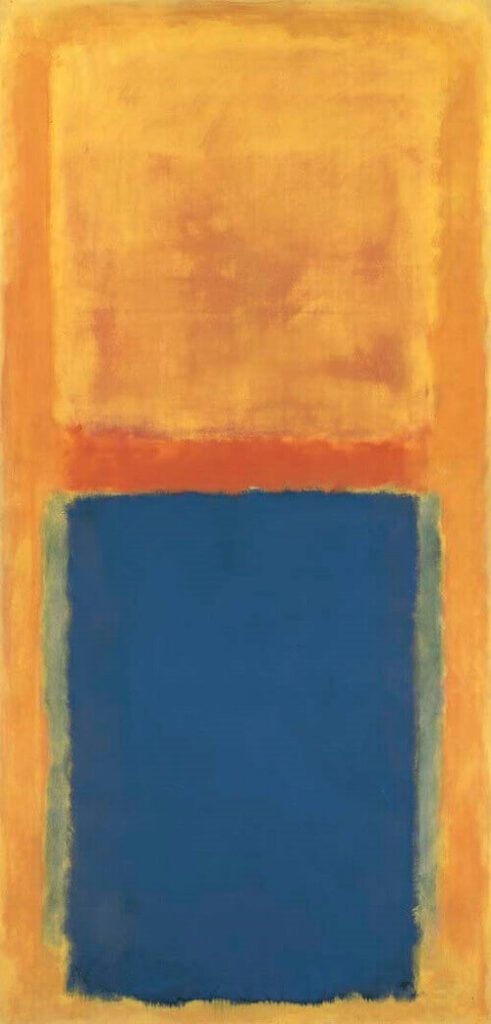
It was Henri Matisse’s style of painting and saturation of color that influenced Mark Rothko. If you look at Matisse’s Painting of The Girl with the Tulips and Mark Rothko’s Homage to Matisse, you can see a similar painting technique with Matisse’s yellow background the way Mark Rothko choose to paint his colors.
Also, in Matisse’s painting of Red Studio, you can see the use of repeated squares and rectangles, which Mark Rothko used a lot in his artwork.
The Homage To Matisse is a beautiful homage to the great artist of Henri Matisse. Mark Rothko understood that Matisse had greatly influenced his art, which helped him become the artist he had become.
It is only fitting that Mark Rothko would paint in 1954, the year that Henri Matisse died, a painting that was an homage to the great artist Henri Matisse.
Ten Reasons Why Mark Rothko Captivates My Heart
Mark Rothko, an icon of Abstract Expressionism, has long captured the admiration of art enthusiasts worldwide. His profound impact on modern art stems not only from his innovative techniques and mastery of color but also from the emotional depth and spiritual resonance his works embody.
I delve into ten compelling reasons why Rothko’s art holds a special place in my heart, reflecting on the unique elements that make his creations timeless and deeply personal.
- Emotional Depth: Rothko’s paintings evoke profound emotional responses. His use of color and form creates a powerful, almost spiritual experience.
- Simplicity and Complexity: The apparent simplicity of his compositions belies a deep complexity. Each piece invites endless contemplation and interpretation.
- Color Mastery: Rothko’s mastery of color is unparalleled. His use of contrasting and harmonious hues creates a mesmerizing visual language.
- Abstract Expressionism Influence: As a pioneer of Abstract Expressionism, Rothko’s work represents a significant shift in the art world, breaking free from traditional forms.
- Spiritual Connection: There’s a transcendent quality to Rothko’s art. His paintings are not just to be seen but experienced, often evoking a sense of the sublime.
- Innovative Techniques: Rothko’s unique approach to layering and applying paint results in textures that give his work a dynamic, living quality.
- Timeless Relevance: Rothko’s art transcends time and place. It remains as relevant and impactful today as when it was first created.
- Personal Reflection: Each painting feels like a mirror reflecting the viewer’s own emotions and thoughts, making every interaction with his work deeply personal.
- Influence on Modern Art: Rothko’s contributions have significantly shaped modern art, inspiring generations of artists to explore emotion and abstraction.
- Artistic Courage: Rothko’s departure from figurative art to create something radically different demonstrates artistic courage, inspiring others to follow their creative instincts.
Anita Louise Art is dedicated to art education, great artists, and inspiring others to find and create their art. We love art that uplifts and inspires. #ArtToMakeYouSmile! #ArtToMakeYouHappy!
If you are interested to see any of my art, you can find out more by clicking here. If you are interested in what inspires me and my paintings, you can discover more by clicking here.
We have a free newsletter and would love you to be part of our community; you can subscribe to the newsletter by clicking here. I would be happy to talk to you if you have any questions. You can reach me, Anita, by clicking here.
Subscribe to our Anita Louise Art YouTube Channel with great videos and information by clicking here.
Join us for our podcast “5 Minutes With Art.” Spend just 5 minutes a week with us to discover and learn about great art and artists. You can find out more about our podcast by clicking here.
Frequently Asked Questions
Who was Mark Rothko?
Mark Rothko was a highly influential abstract expressionist artist known for his unique approach to color and form.
What is abstract expressionism?
Abstract expressionism is an art movement that emerged in the mid-20th century, characterized by abstract and non-representational forms of expression.
What are some of Mark Rothko’s notable contributions to abstract expressionism?
Rothko is known for his large-scale color field paintings, which often consisted of rectangular forms of saturated colors. He explored the emotional impact of color and created immersive environments through his artwork.
What is the significance of Homage To Matisse in Mark Rothko’s body of work?
Homage To Matisse stands out from Rothko’s usual numerical and color-labeled paintings as it serves as a personal tribute to the renowned French artist Henri Matisse and his influence on Rothko’s artistic development.
Who was Henri Matisse?
Henri Matisse was a prominent French artist known for his use of color and his contributions to various art movements, including Fauvism and modernism.
How did Matisse influence Mark Rothko’s artwork?
Matisse’s bold use of color, simplified forms, and emphasis on emotional expression had a profound impact on Rothko’s artistic style and his exploration of color as a means of evoking deep emotions.
What distinguishes Homage To Matisse from Rothko’s other paintings?
Unlike his other works, which are typically labeled with numbers and colors, Homage To Matisse stands out as a personalized tribute, emphasizing the significance of Matisse’s influence on Rothko’s artistic journey.
Can you describe the painting Homage To Matisse?
Homage To Matisse, painted by Mark Rothko in 1954, features Rothko’s signature rectangular forms but is uniquely dedicated to Matisse. While specific details may vary, it generally showcases a composition that embodies Rothko’s reverence for Matisse’s artistic legacy.
Related Questions
Why Paintings Like Rothko’s No. 6 (Violet, Green, & Red) Are Expensive
Mark Rothko’s No 6 (Violet, Green, and Red – 1951) was sold in 2014 for 140,000.000 Euro or over 184,000,000 USD. A huge amount for any painting. Many of Mark Rothko’s paintings continue to fetch record numbers at auction houses worldwide.
By clicking here, you can learn more by reading Why Paintings Like Rothko’s No. 6 (Violet, Green, & Red) Are Expensive.
What Makes Mark Rothko’s Paintings So Valuable?
Mark Rothko’s paintings have been valuable for many years; they are in high demand and continue to fetch record prices around the globe. At first glance, the paintings may look simple, but upon closer look, they are very complex; they are meant to evoke our emotions and transport us to another realm.
By clicking here, you can discover more by reading What Makes Mark Rothko’s Paintings So Valuable?.
The Last Painting Created By Mark Rothko Before His Death
Mark Rothko’s final painting is a bright red painting called Untitled, 1970 which many feel symbolizes blood, particularly his blood as he died from an overdose and slashing his wrists; Mark Rothko was 66 years old and left no suicide note. We know that before his death, he also painted a black and grey series that many have felt was his painted suicide note.
By clicking here, you can learn more by reading The Last Painting Created By Mark Rothko Before His Death.

